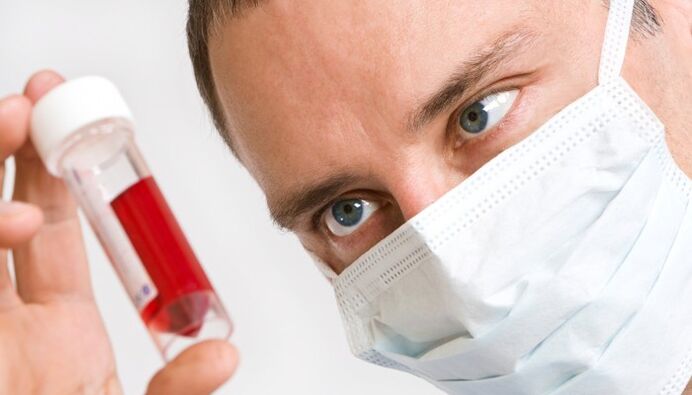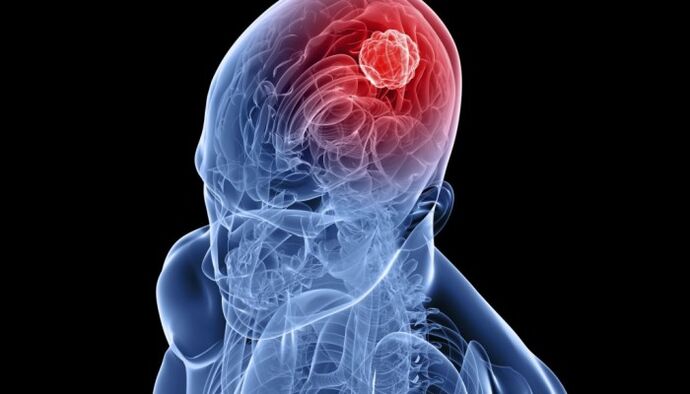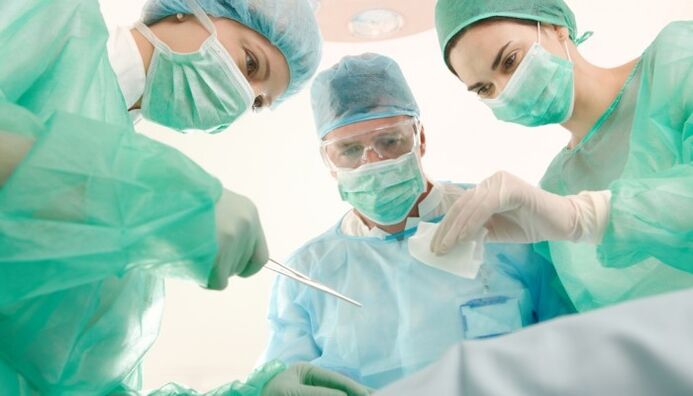If there is unpleasant sensation in a particular area, it is certainly a source of trouble for the patient, but pain throughout the body brings with it much more suffering. In this case, even everyday activities take a back seat as they are difficult to perform.
Many people are familiar with the feeling of weakness, fatigue, and pain that interfere with an active life. Likewise, frequent pain in muscles, bones or joints cannot be ignored. It must force the patient to make quick decisions in order to find out the reason and nature of further measures. But for this you need to see a doctor first.
causes
When the muscles and joints of the whole body ache, the first thing to do is to find out what it is associated with.
A vast zone of such sensations must push the patient and the doctor to the idea of a systemic lesion. The cause should not be looked for in individual tissues of the musculoskeletal system, but in the function of the entire organism and its systems. At the same time, it's pretty hard to understand what actually hurts: muscles, bones, or joints. Such sensations spread throughout the body and do not have an exact localization. Nevertheless, there are states for which a similar situation is quite typical. These include the following:
- Body stress.
- Infectious diseases.
- Connective tissue pathology.
- Blood disorders.
- Tumor processes.
- Neurological disorders.
As you can see, the pathology is very diverse and serious. If you do not take into account the completely physiological reasons for muscle weakness and pain, then you need to be very careful about the likelihood of these diseases. A visit to the doctor is never superfluous.
A doctor can make a presumption about the development of pain in joints and muscles of the whole body after a clinical examination.
Symptoms

Each pathology has distinctive features. All manifestations should be taken into account, even if they are insignificant. In order to identify a disease that affects the condition of muscles and joints, it is necessary to analyze the patient's discomfort and objective symptoms.
Since pain is the most common symptom, it is necessary to consider its possible features:
- Aching, burning, cutting or stabbing.
- It is localized in the area of muscles, bones or joints.
- Feels in the same areas of the body or is fleeting.
- Permanent or periodic.
- Moderate, strong, or weak.
It may be accompanied by weakness, tiredness, or pain. If the cause of the pain lies in general illnesses of the body, then there will certainly be other symptoms that suggest the cause of the problem.
Body stress

First of all, you should rule out a situation that almost anyone could face. Excessive physical activity can lead to pulled muscles that affect sensations in different parts of the body. Pain and weakness are associated with the build-up of lactic acid in the tissues and micro-damage to the fibers. Because of this, a sore throat develops, which over time will go away. It should be remembered that only muscles are involved in the process and there should be no other symptoms.
If excessive physical demands are ruled out, more serious causes of pain must be looked for.
Infectious diseases

Bone and muscle pain is known to anyone who has ever had a respiratory infection. Even a mundane ARI is associated with such symptoms. What can we say about a more serious pathology such as influenza, meningitis, hemorrhagic fever, leptospirosis, borreliosis. Flight pain is characteristic of brucellosis and epidemic myalgia. In many cases, such sensations are the result of microbial poisoning. Infectious diseases are accompanied by other symptoms:
- Fever.
- Cough, sneeze.
- Skin rash.
- Nausea, diarrhea.
- Headache.
- General weakness.
Joint pain can bother even patients with liver damage - viral hepatitis. In this case, the severity in the right hypochondrium, yellowing of the skin and decreased appetite are characteristic. we must not forget the possibility of parasitic invasions, for example trichinosis, in which muscular pain is of great diagnostic value.
The spectrum of infectious pathology is very wide, so it is necessary to identify the cause of pain in the body in a timely manner.
Connective tissue pathology

If muscles and joints hurt, it is necessary to examine the patient for systemic diseases: lupus erythematosus, polymyositis, scleroderma, rheumatoid arthritis. They are autoimmune and occur when there is damage to the connective tissue that occurs in all body systems. In this case, you should pay attention to the following features:
- Symmetrical damage to the wrists with characteristic deformities - in rheumatoid arthritis.
- Reddening of the skin in the form of a butterfly - with lupus erythematosus.
- Weakness of the muscles of the limbs and neck - with polymyositis.
- Thickening of the skin on the fingers, mask-like face - with scleroderma.
Another disease with systemic manifestations should be mentioned - rheumatism. Although a microbial pathogen (streptococci) becomes the triggering factor, an autoimmune process will develop in the future. Flying pains in the joints are characteristic of this disease.
Connective tissue disorders are associated with damage to internal organs: the heart, lungs, kidneys, as well as blood vessels and the nervous system.
Blood disorders

Haematopoietic system disorders are a common cause of bone pain. Unfortunately, most of them are malignant, so it is useful for everyone to know the characteristic signs of such a pathology. In addition to pain in the limbs, the following symptoms occur in leukemia:
- Temperature increase.
- Swollen lymph nodes.
- Bleeding in various locations.
- Pale skin.
- Enlargement of the spleen and liver.
- Infectious tendency.
In addition, shortness of breath, general weakness, loss of appetite, nodules on the skin can be bothersome. The acute form of leukemia occurs with pronounced manifestations and, without adequate treatment, poses a serious risk to life.
Tumor processes

Pain in the area of bones, joints or muscles of the whole body can appear in the structure of paraneoplastic syndrome, which is characteristic of various malignant tumors. It develops due to metabolic, immune, and other disorders associated with the primary process. Frequently observed arthro- or osteopathies, similar to various rheumatological diseases. Similar signs appear long before the detection of the tumor process.
In addition, bone pain can result from "cancer intoxication" which is observed in patients with advanced tumors and metastases. In addition to the indicated symptom, general disorders predominate in the clinical picture:
- Great weakness.
- Emaciation to the point of exhaustion (cachexia).
- Loss of appetite, nausea.
- Pallor of the skin with a greyish, icteric, or bluish tinge.
- Fever.
- Depression, irritability.
Such signs significantly aggravate the patient's condition and affect the prognosis of the disease.
It is necessary to pay increased attention to the detection of tumors in the early stages, which is possible only with regular preventive examinations.
Neurological disorders

If the patient feels muscle, joint or bone pain, the problem may even be in the nervous system. Very often, similar symptoms are observed in polyneuropathy. The disease can have different localizations, but the lower extremities are most susceptible to it. In such cases, the following symptoms are noted:
- Numbness, tingling, burning, crawling "goose bumps".
- Decreased sensitivity.
- Change in the severity of the reflexes.
- Muscle weakness, hypotrophy.
- Thinning skin, hair loss, dryness.
Polyneuropathy can cause severe pain, which significantly affects the patient's quality of life.
diagnosis

After a clinical examination, it is necessary to use additional methods that will contribute to the correct diagnosis. Given the multitude of possible pathologies, the doctor needs a variety of laboratory and instrument tools. These include the following:
- General analysis of blood and urine.
- Biochemical blood test (infectious antigens, rheumatoid tests, tumor markers, acute phase indicators, liver function tests, etc. ).
- Bacteriological analysis of blood and body secretions.
- Puncture of the bone marrow.
- Computed and magnetic resonance tomography.
- Neuromyography.
It is necessary to consult a rheumatologist, infectious disease specialist, oncologist, hematologist and neuropathologist.
Based on the results of a comprehensive examination, it is possible to make a final statement about the development of pain in the bones or muscles.
treatment
After establishing the diagnosis, the doctor will determine further measures. Therapeutic tactics depend on the type of disease, its prevalence and the condition of the patient's body. It is difficult to formulate a general therapy program for all diseases that can be associated with pain or pain in the joints, muscles and bones. It all depends on the specific situation that dictates the use of conservative or operative techniques.
Drug therapy

The main pillar of treatment for most diseases is medication. They have become an integral part of modern medicine. A variety of drugs allow you to affect almost any pathology development mechanism and its cause. With the advent of certain drugs, it has become much easier to treat serious illnesses.
Depending on the diagnosis made and the clinical situation, the following drugs can be used for pain throughout the body:
- Antibiotics and antiparasitics.
- Nonsteroidal Anti-Inflammatory.
- Hormones (glucocorticoids).
- Cytostatics and immunosuppressants.
- Detoxification.
Many of the drugs have serious contraindications for neoplastic disease. This applies to vitamins and metabolic agents. Their use can improve the progression of the pathological process. Of course, the treatment complex can include additional drugs that affect individual symptoms of the disease.
Medicines must meet the generally accepted standards of therapy and may only be prescribed by a doctor.
Operative treatment

Surgery may be indicated for tumors or blood disorders. In the first case, the pathological focus is removed along with the regional lymph nodes. Due to the nature of the disease, subsequent appointment of radiation therapy is possible. With progressive leukemia against the background of conservative therapy, a bone marrow transplant is recommended.
Pain in the musculoskeletal system and joint systems, which affects most of the body, can be a serious cause for concern. Early diagnosis and proactive treatment will help prevent complications and improve the prognosis for any disease.





































